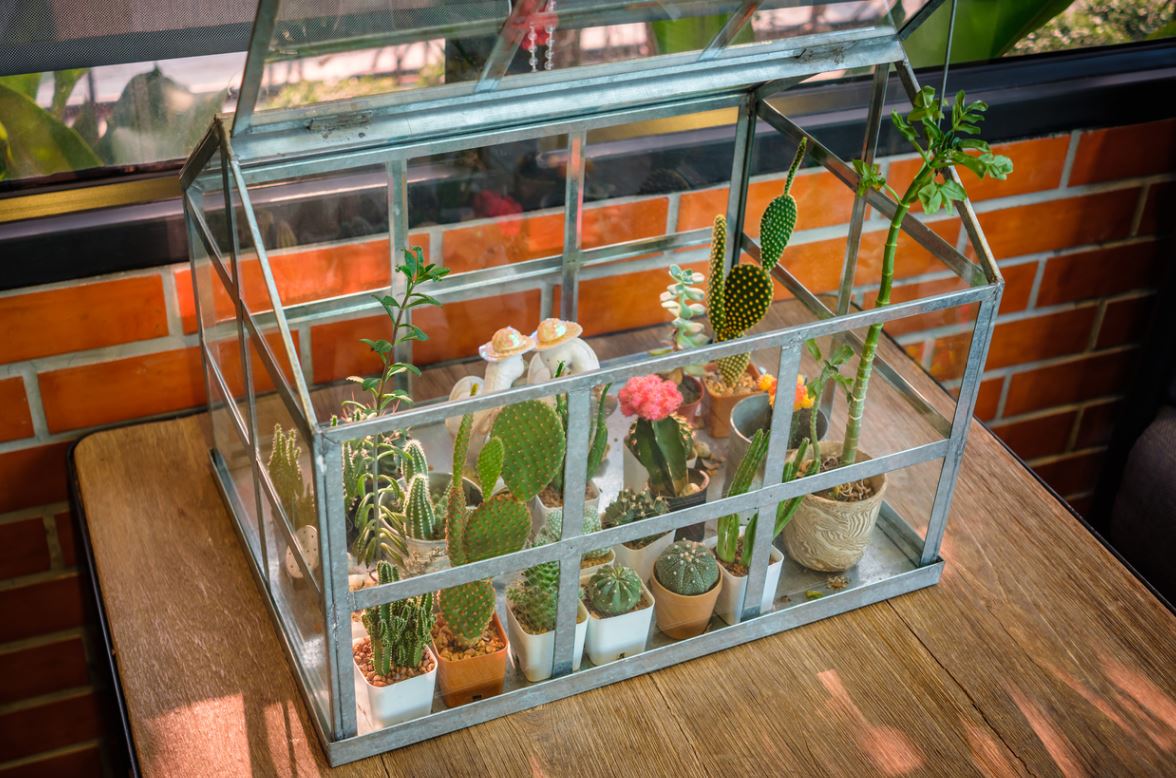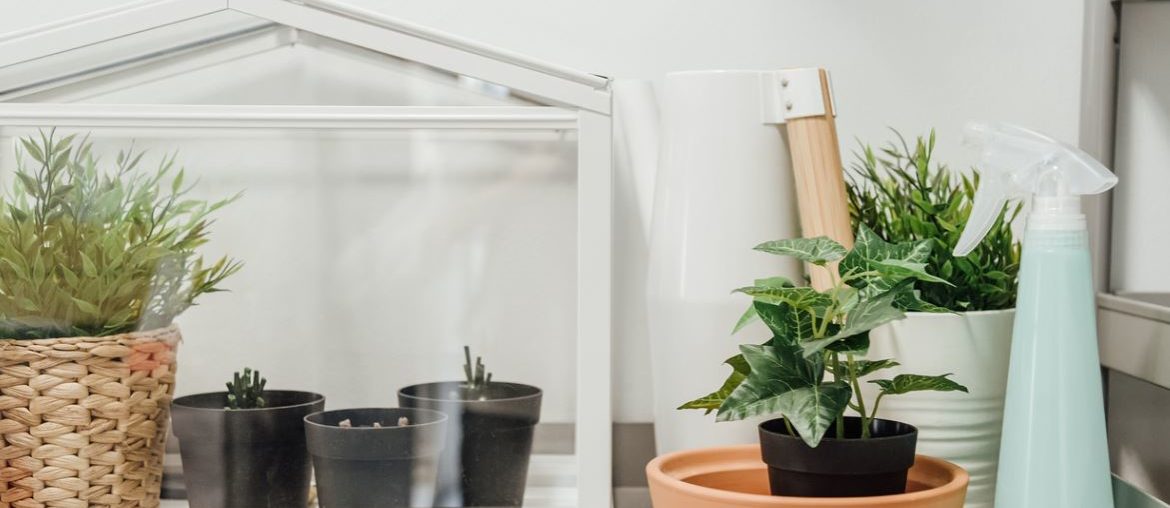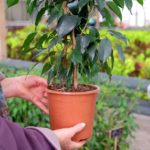For successful seedlings and delicate cuttings, there is nothing like a cultivation miniserre, which will maintain high humidity and even heat the soil. There are also decorative models, intended to accommodate capricious species or a few small rarities that will make you proud …
For delicate and capricious plants
If you aren’t lucky enough to own a greenhouse or veranda, don’t despair of successfully growing the most delicate plants, including orchids and epiphytic Bromeliads, certain ferns, and carnivorous plants. All these species are sorely lacking in atmospheric humidity in our homes and this is the main cause of failure. It is enough to lock them in a “glass prison” for everything to change. Indeed, the water contained in the substrate will naturally evaporate, but remain trapped in the glass (or plastic) wall, creating the wetness sought by the plants mentioned above.
Due to the greenhouse effect, which traps the calories provided by the light, the temperature inside a miniserre rises, which causes better plant growth and promotes seed germination or rooting of seeds. cuttings.
Our advice: Choose a model that is as large as possible. Indeed, plants will do well under glass or plastic and thrive quickly. But above all, their foliage must not touch the transparent wall, otherwise they risk a fatal and rapid attack of gray rot.
The decorative miniserre
It is both an aesthetic setting and an “ecological bubble” which benefits from the microclimate that we have just described. In this category we find “carboys” and other large glass containers, which can be transformed into a small tropical garden. Decor can thrive for several years indoors, provided you do not overwater (the container is waterproof) and avoid exposure to direct light. Indeed, the transparent wall acts as a magnifying glass for the light rays, which can cause serious burns of the foliage in the event of strong insolation.
More expensive, but true small works of art, the miniature reproductions of old-style stained-glass windows are characterized by a metal structure that supports the panes. The different models are almost made to measure by specialized craftsmen. This type of miniserre will be an integral part of the decor of the room. Before purchasing, make sure that the various elements are easy to disassemble and assemble, so that maintenance does not turn into a painful chore.
The orchidarium is a kind of miniature showcase or greenhouse, which includes not only the structure, but also the accessories with heating, lighting, humidifier, fan and thermostat. It is an expensive artisanal manufacture, but the only one to guarantee 100% results.

Multiplication Miniser
These are small fabrications wider than they are tall where it is impossible to cultivate plants, except for a few small carnivores, pebble plants and micro-orchids.
These plastic miniserres consist of a tray which receives the soil and a transparent dome which is applied on it, allowing a tight closure. We create a “stifled” atmosphere, conducive to the rooting of the cuttings. You will get better results with models that have a heating element. Placed at the bottom of the tank, once plugged in, it raises the temperature of the soil to 25 ° C. It is regrettable that models with a thermostat are not offered, allowing the temperature to be precisely modulated according to the species sown or cuttings.
Good to know : Most do not have drainage holes for excess water, so provide a drainage layer.
How to garden under glass?
The difficulty in making a decoration in a carboy comes from the diameter of the orifice. If you can’t get your hand through it, use bamboo chopsticks as a dibble. Choose plants that are small enough that they slide into the opening without getting damaged. Do not use potting soil. Due to the high ambient humidity, it could cause the appearance of rot. Coarse sand, pebbles and expanded clay balls are suitable.
Make layers of materials of different colors to increase the decorative aspect of the composition. The plants to be used are: fittonia, pilea, peperomia, selaginella, hypoestes, miniature saintpaulia, small ferns for peripheral plantings. For the center, a young plant of chamaedorea, cordyline, pleomele, croton.
Water sparingly, adding a capful of liquid fertilizer diluted in 10 liters of water.
- Fill a quarter of the container with balls of expanded clay or small white pebbles very carefully cleaned.
- Very young plants are removed, taking care not to damage the roots. Compact the root ball in the palm of your hand to facilitate planting in the bottle.
- Place low plants on the periphery and a vertical plant in the center. Water, then close the bottle to obtain a high humidity inside.
Read also :









